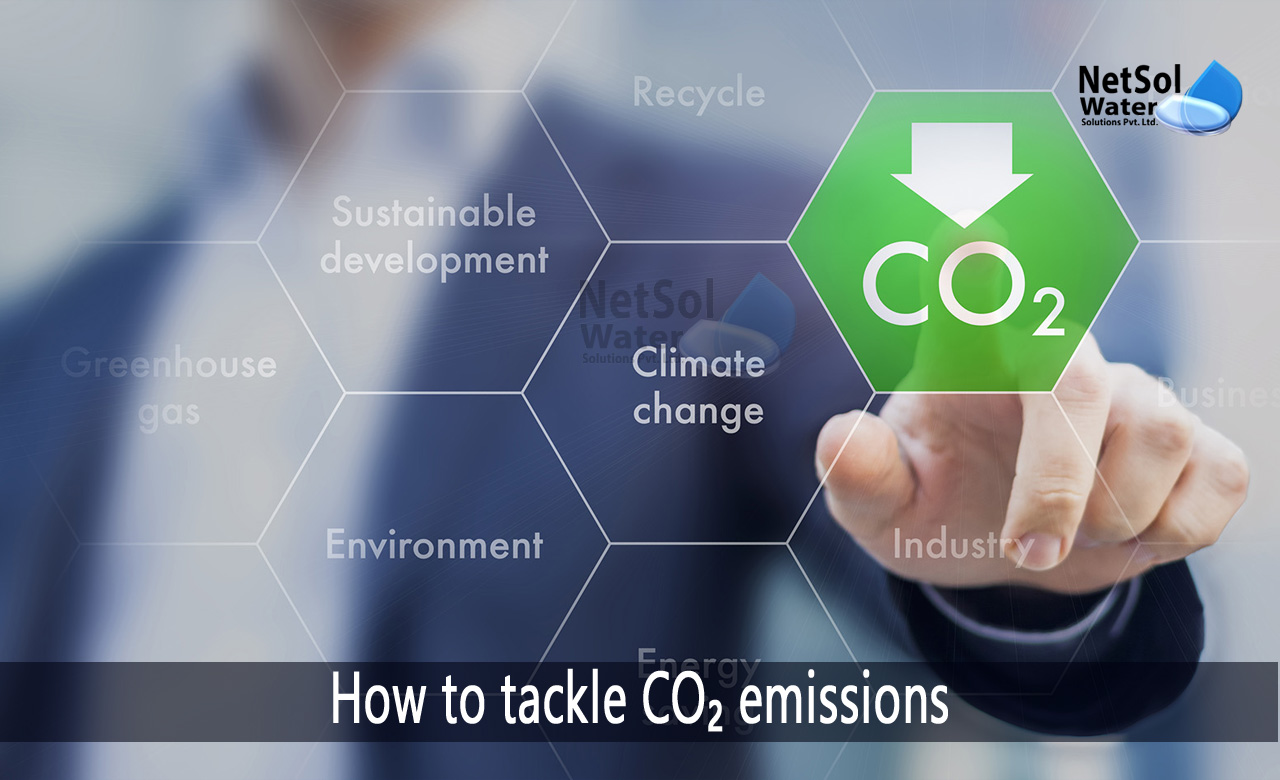Hotter summers, rising ocean temperatures, melting polar ice, and increased storm activity, are all changing as the temperature rises. Each of these terms refers to the same thing: the rising average temperature of the Earth's atmosphere.
These go beyond simple weather changes. They lead to increase in carbon dioxide emissions (CO2). Let’s see how countries can tackle increased carbon dioxide levels.
How to tackle CO? emissions?
Unless, we achieve significant reductions in CO2 and other GHG emissions, the world faces global warming of more than 1.5°C (and possibly even 2°C) this century.
The frequency and intensity of hot extremes, marine heat-waves, heavy precipitation, agricultural and ecological droughts in some regions, and the proportion of intense tropical cyclones are increasing, while Arctic sea ice, snow cover, and permafrost are decreasing.
With these risks in mind, it is critical to strengthen public policies at all levels - from local to international - in order to achieve net zero emissions and adapt to the effects of climate change.
Countries need better tools to tackle climate change
The initiative of IPAC aims to assist countries in their efforts to achieve net-zero GHG emissions, and more resilient economies by 2050.
Through frequent monitoring, policy review, and feedback on results and best practises, IPAC will help countries strengthen and coordinate their climate action, while completing and supporting the UNFCCC and the Paris Agreement.
Subnational governments, cities, and businesses all play an important role in accelerating climate action. In this regard, the United Nations Global Climate Action portal, launched in 2014, has registered nearly 25,000 actions from cities, businesses, and organizations seeking to address and combat climate change.
Stagnation in the funding, as well as the implementation of climate technologies
Despite, the fact that the majority of global CO2 emission reductions through 2030 will come from currently available technologies, the progress is slow and many sectors are resisting the transition.
The implementation of feasible, economically viable strategies that foster these types of technologies, as well as the necessary policies to mass-deploy them, and the allocation of funds for green projects, have not progressed quickly enough. Energy efficiency and reduced fossil fuel consumption are critical for lowering CO2 and other GHG emissions, as well as short-lived climate pollutants.
Electric Vehicle is on the rise to reduce CO2
Electric vehicle use is increasing around the world, and because they are powered by low-carbon electricity, they are reducing greenhouse gas emissions from land-based transportation.
Conclusion
Achieving net-zero greenhouse emissions necessitates more than just reducing emissions, and includes a strategy known as carbon dioxide removal (CDR). The consequences, risks, and co-benefits of CDR deployment for ecosystems, biodiversity, and people will vary greatly depending on the method, site-specific context, implementation, and scale.
However, depending on the context, reforestation, improved forest management, soil carbon sequestration, and blue carbon management are examples of methods, which can improve biodiversity and ecosystem functions, employment, and local livelihoods.
How can we assist?
Netsol Water is dedicated to offering water, wastewater and air pollution management solutions, which encourage corporate growth while simultaneously safeguarding the world's most valuable resources on the Earth.
Netsol Water is Greater Noida-based leading water & wastewater treatment plant manufacturer. We are industry's most demanding company based on client review and work quality. We are known as best commercial RO plant manufacturers, industrial RO plant manufacturer, sewage treatment plant manufacturer, Water Softener Plant Manufacturers and effluent treatment plant manufacturers. Apart from this 24x7 customer support is our USP. Call on +91-9650608473, or write us at enquiry@netsolwater.com for any support, inquiry or product-purchase related query.



